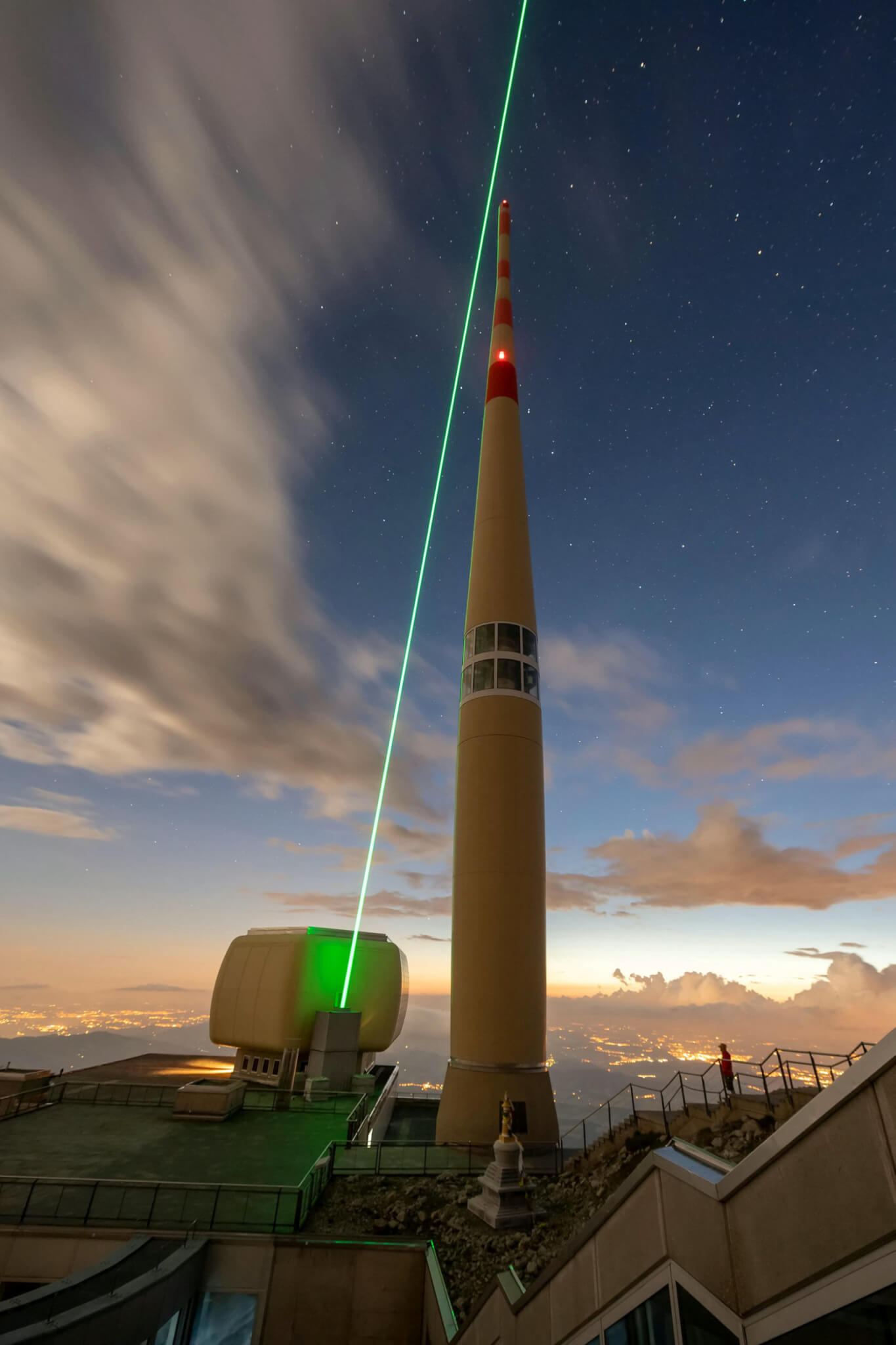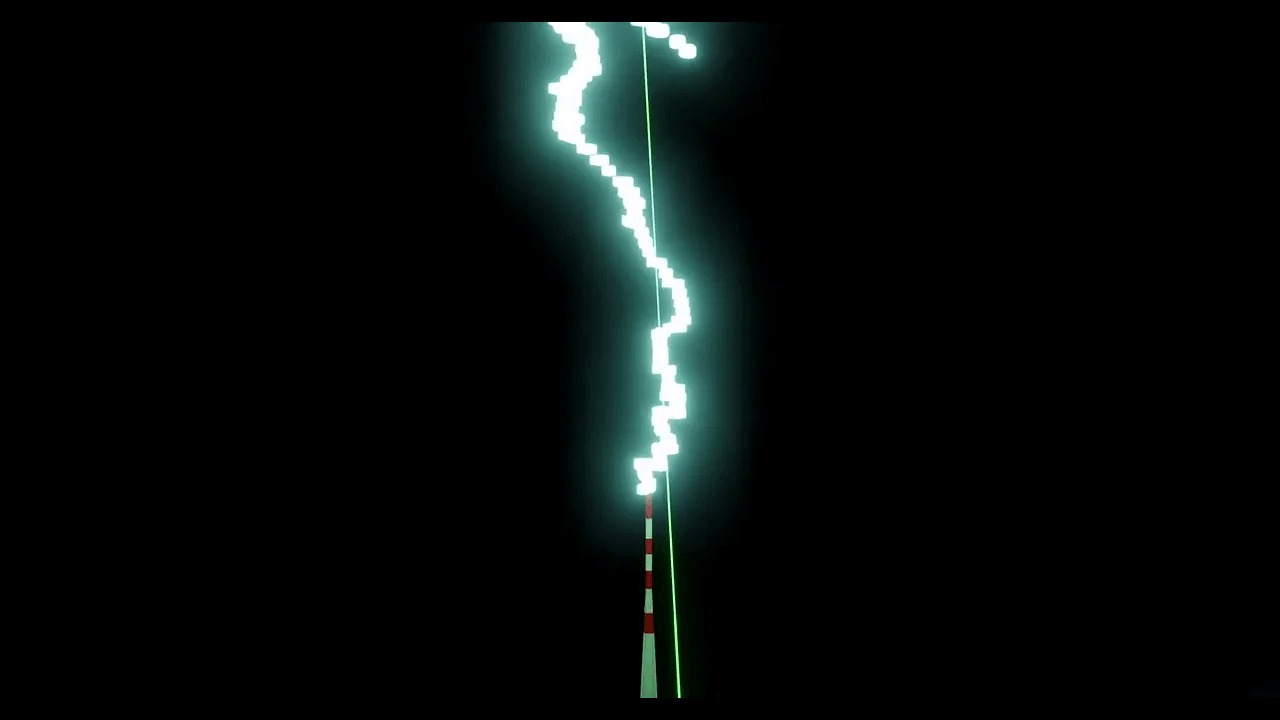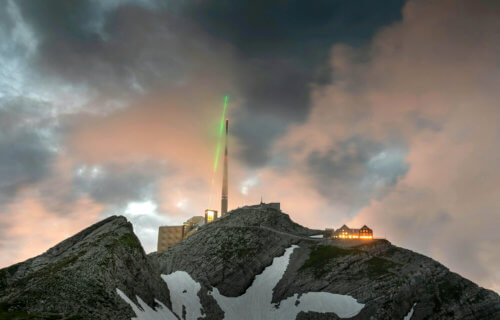PARIS, France — Scientists in France have created a way to divert lightning strikes using a weather-controlling super laser.
Researchers with the Polytechnic Institute of Paris guided the strikes from thunderclouds to places where they don’t cause damage. The team says the new technique could save power stations, airports, launchpads, and other buildings from disaster.
The system creates a virtual lightning rod, metal conductors that intercept flashes and guide their currents into the ground.
“The findings extend the current understanding of laser physics in the atmosphere and may aid in the development of novel lightning protection strategies,” says corresponding author Dr. Aurelien Houard, according to a statement from SWNS.
The five-ton device is about the size of a large car and fires up to a thousand pulses per second. The scientists installed it near a telecommunications tower in the Swiss Alps – which is struck by lightning around 100 times a year.
“A powerful laser aimed at the sky can create a virtual lightning rod and divert the path of lightning strikes,” Dr. Houard tells SWNS. “The findings may pave the way for better lightning protection methods for critical infrastructure – such as power stations, airports and launchpads.”
Lightning rods were invented by Benjamin Franklin in 1752 as part of his groundbreaking exploration of electricity, and they’re still in use today. However, installing them is often impractical. They only combat the direct effects of lightning strikes and can cause electromagnetic interference and voltage surges in devices and appliances.
“Acting as a virtual, movable rod, a laser beam directed at the sky could offer an alternative,” Dr. Houard continues.

The laser could prevent billions of dollars in damage
The idea of using intense laser pulses to guide lightning strikes has been previously explored in laboratory conditions. However, there weren’t any field tests that previously demonstrated lightning guiding by lasers. Dr. Houard and colleagues carried out a series of experiments last summer on the top of Mount Santis in northeastern Switzerland.
In six hours of operation during thunderstorms, they observed the laser diverting the course of four upward lightning discharges from the 400-foot-tall tower. Results were corroborated using high-frequency electromagnetic waves generated by the lightning to locate the strikes.
“Increased detection of X-ray bursts at the time of the strikes also confirmed successful guiding,” Dr. Houard tells SWNS. “One of the strikes was directly recorded by high-speed cameras and shown to follow the laser path for over 50 meters.”

The trillion-Watt laser described in Nature Photonics is the first of its kind, and one of the most powerful in its class.
Lightning has immense destructive power. It can cause power outages and forest fires, damage electronic systems and infrastructure, and even lead to the injury or death of humans and livestock. The damages it causes amount to billions of dollars every year. With climate change and the consequent rise in the frequency and severity of storms, damages from lightning will probably increase in the future.
Redirecting lightning using lasers would therefore help protect vulnerable sites such as airports, forests, skyscrapers, and power plants. The laser works by generating a long, ionized channel called a laser filament towards the clouds. It acts as a preferential path for the lightning, deviating it away from vulnerable sites.
“By shooting a thousand laser pulses a second into the clouds we can safely discharge the lightning and make the world a little bit safer,” adds co-author Dr. Clemens Herkommer of Trumpf Scientific Lasers.
When are lightning strikes a major concern?
Santis is considered one of Europe’s lightning hotspots, mostly concentrated during peak thunderstorm activity between May and August.
“Lightning has fascinated and terrified humankind since time immemorial,” Dr. Houard says.
“Based on satellite data, the total lightning flash rate worldwide – including cloud-to-ground and cloud lightning – is estimated to be between 40 and 120 flashes per second, causing considerable damage and casualties. The documented number of lightning fatalities is well above 4,000 and lightning damages amount to billions of dollars every year.”
South West News Service writer Mark Waghorn contributed to this report.


Ok, so you save one thing, but who knows what the consequences of this are? All of this weather changing tech being used today is causing all kinds of issues.
We all wonder how long before these strikes can power batteries or something more conductive to raw energy.
In the old Rocky The Flying Squirrel cartoon show, Boris Badenov was reading out loud the elements detected by a prospecting machine he was using. He then came upon the following two elements: uranium and molybdenum. But Boris could not pronounce molybdenum, “Natasha, there’s uranium, molyd…molibm..molidim…more uranium.” It worked just fine.
Fascinating what Ecole Polytechnic was able to achieve, once again! Should we now harvest guided lightening energy?
Did you know there is already a technology, based upon a Nikola Tesla patent, that eliminates the factors which cause lightning in the first place with no ‘guidance’ necessary… Our simple device stops lightning from striking within a given protected area, no power required. With over a decade in its current form and 8000+ installations, there has never been a recorded strike on any location with our technology in place. Want to know how?
https://teslauniverse.com/nikola-tesla/patents/us-patent-1266175-lightning-protector
Why doesn’t the lightning bolt follow the ionized laser channel back to its source-destroying the laser?
Because this article is pure (bad) science-fiction.
Now, to devise a way to collect that energy. Wish Tesla was alive.
So, you recommend we all fire lasers skyward? Sounds like a wonderful hobby. Don’t tell pilots to close their eyes.
More research opportunities are available and international funding is available:
Please take these to Ukraine and practice hitting the Russian warships in the Black Sea with the redirected lightning energy strikes …
A Musk startup should use these strikes to charge batteries or raise snow or water to a higher level to convert to hydro electricity.
The real question is, have they weaponized it yet? Because if they can make lightning not hit something, someone in the defense industry will want to make it hit particular things.
This^^^
Diverting and directing could also be called AIMing. In before Tesla coils zapping tanks.
And the end point/destination of the trillion watt laser isn’t going to cause a problem with aircraft or satellites?
Hard to believe that.
4000 people have died from lightning (no timeframe given, probably 60 years).
If you can direct lightning you maybe be able to drain the current out of the clouds as well. That would be great
Each 1mS pulse, if power is 1TW, is about 300 kWh of electricity, which is equivalent to about 3 Tesla Model S batteries. If cost is $0.10/kWh that is $30 per millisecond pulse. The energy has to be stored in something very fast such as supercapacitors or better. These have been much more expensive than batteries. The supporting infrastructure needed is substantial. It will be interesting to see what develops but it looks like the lightning is safe for now.
Unfortunately, lasers, especially at this size, pointed upwards destroys ozone and our atmosphere. Since you’re all about climate change, why wouldn’t you comment or research the devastating effects of this laser to our own atmosphere?
Why do I feel soon we will have military redirecting lightning to enemy countries…
Since I am sure that no Zulus were involved in the discovery, the scientists should have just named it using English or Dutch words.